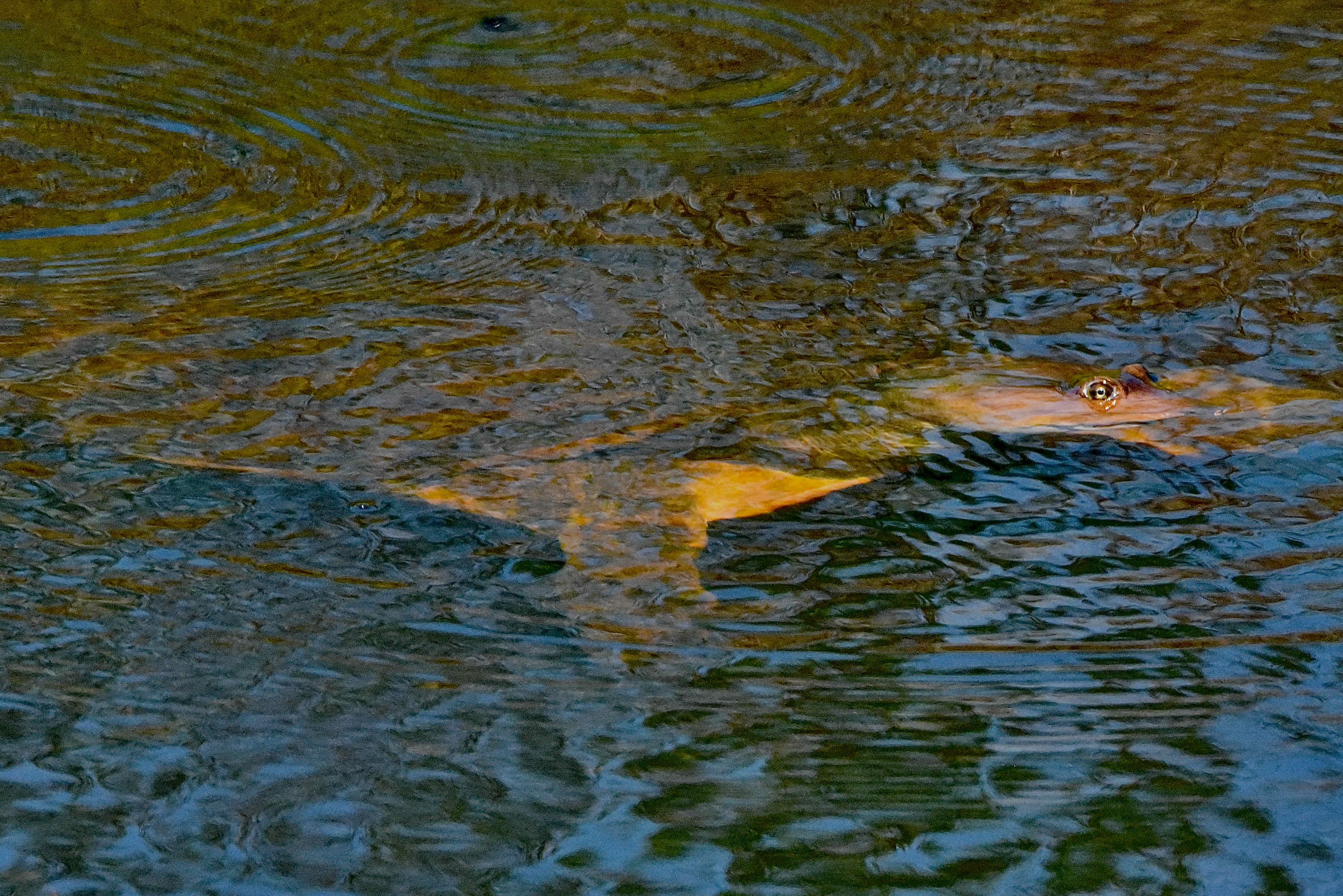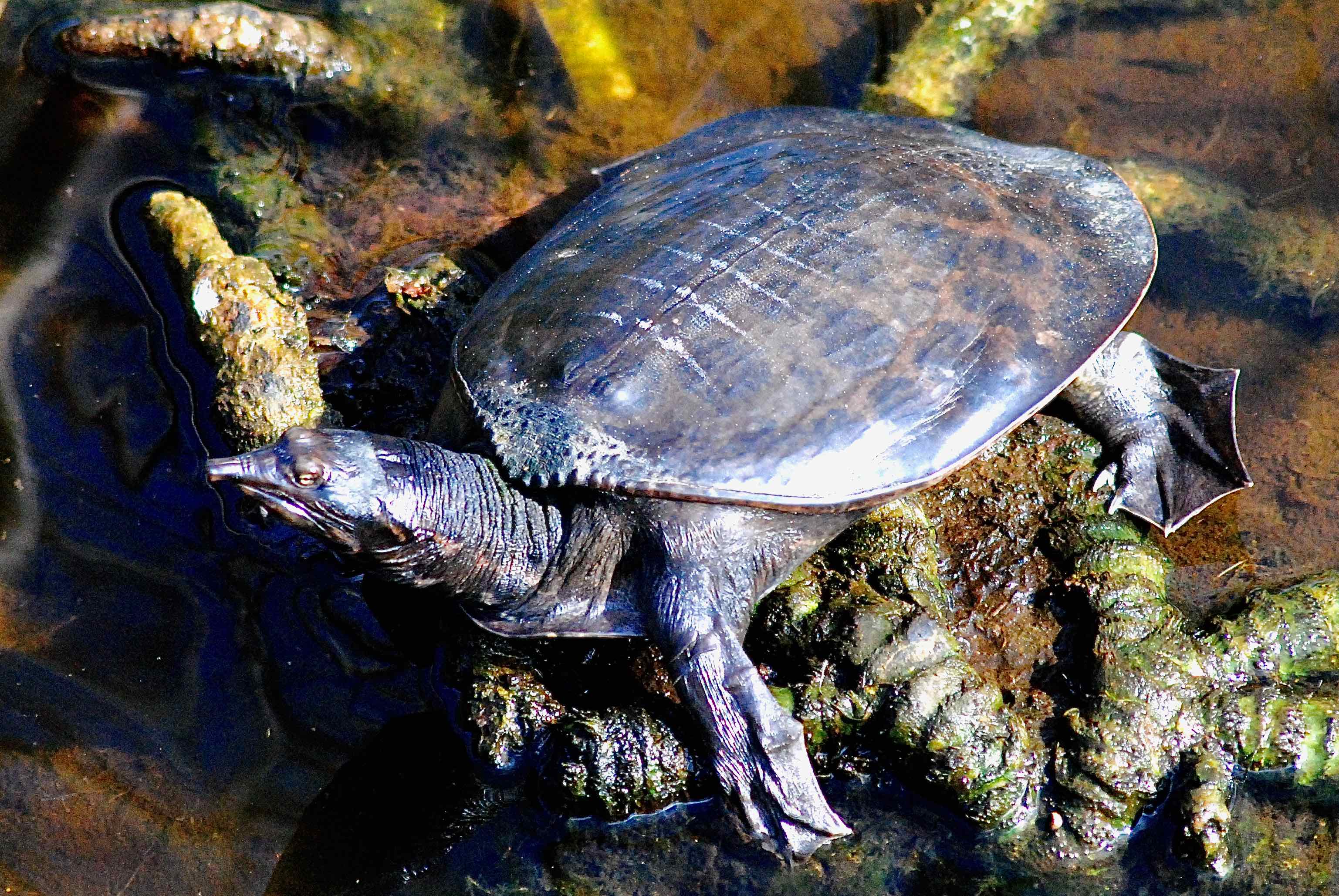
Florida softshell turtle, photographed at Loxahatchee National Wildlife Refuge, Boynton Beach, Palm Beach County, in April 2021.
The Florida softshell turtle, Apalone ferox, stands apart from other freshwater turtles found in the Sunshine State by two main features: an extremely long nose and flipper-like feet.
They spend most of their lives in water, rarely appearing on dry land but are surprisingly quick on terra firma when need be. That snorkel-like nose at the end of an extremely long neck might be the only part of the softshell above the water line. They also have a lining in their throats that absorbs oxygen from water, enabling a softshell to stay submerged for hours.
There are 26 turtle species found in Florida, but this is the only softshell. What makes it a "softshell?" It's covered in skin, or leather, unlike most other turtles. The top of the shell is flat and olive-green or brown, blending in perfectly with the mucky bottom of a wetland, pond or lake. Young softshells have a pattern on the shell — seen in the middle photo below — that disappears as the turtle ages.
Like other softshells worldwide, they are big, growing to 30 inches or more in length and weighing as much as 44 pounds. Females can be twice the size — or more — of the males. We've seen them only in freshwater, but they can tolerate some salt. They are hunters, dining on fish, snails, bugs, frogs and birds, using their long necks to strike their prey in ambush fashion. They've been known to dine on ducks and even small herons. They're also scavengers. In turn, we've seen them become meals for alligators.
And lest you think they are meek creatures, Ferox means ferocious. If they feel threatened, softshells will snap at anything that comes within reach of their sharp claws and teeth.
Breeding season for Florida softshells begins in early spring in the southern reaches of the Sunshine State, and continues into July. Females clamber out of the water and dig holes in a sandy bank, where they'll lay as many as 30 eggs. They'll repeat the process 5 to 7 times during a season, laying as many as 225 eggs altogether.
Unlike some reptilians, the sex of individuals is determined genetically rather than by temperature of the eggs.
Like other turtles, they will attempt to lay their eggs in an alligator's nest. It's a dangerous game they play, but if successful, the eggs gain the protection of the alligator mom. And that's huge, because the list of animals that eat turtle eggs is a long one — raccoons, bears, foxes, skunks and crows are among the predators. It's unknown how long these guys might live in the wild; in captivity, they've been known to make it 20 years or more.
The eggs hatch after two or three months; young turtles, about an inch-and-a-half long and prey for birds, frogs, small gators, snakes and small mammals, head for cover and stay there, hoping to beat the odds and reach maturity. Florida softshells are found in parts of Alabama, Georgia and South Carolina and most of Florida. One notable exception: the Keys. In colder weather, they will hibernate.
They are members of Trionychidae, the family of soft-shell turtles.



